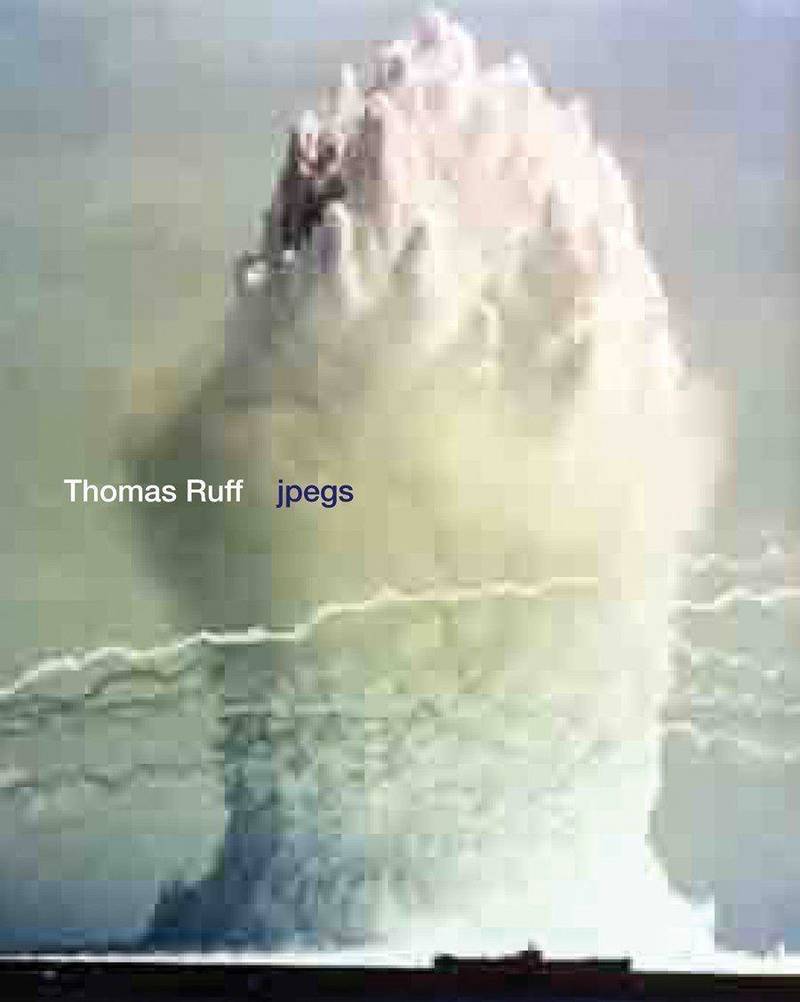How much visual information is needed for image recognition? A pretty small quantity of data will go a long way for the brain and the computer, both of which take shortcuts for the sake of speedy comprehension. In the “Jpegs” series, German photographer Thomas Ruff exploits this imprecision in digital technology, locating online jpegs and enlarging them until the pixels emerge in a chessboard pattern of near abstraction. A closer look at these images reveals that, in addition to the degeneration of the image into a digital grid, the color and brightness generated by the algorithms of the compression also become visible. Many of Ruff's works in this series focus on idyllic, seemingly untouched landscapes, or conversely, on scenes of war and nature disturbed by human manipulation — subjects ill suited to disruptive pixelation, and therefore perfect for Ruff's purposes. Taken together, these images constitute an encyclopedic compendium of contemporary visual culture that also engages the history of landscape painting. A fittingly deluxe and oversize volume, “Jpegs” is the first monograph dedicated exclusively to this monumental series.
- / Автор статьи
- / Редактор
- / Персоналия
